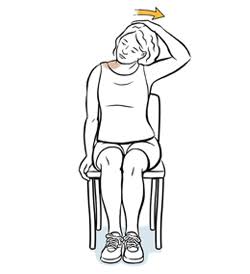‘Text Neck’ Can Happen To Anyone—Here Are Four PT-Approved Stretches
- Maulik Patel
- Dec 13, 2021
- 3 min read
Screens are a part of life, so there is no judgment here if you’re dealing with text neck. However, proactive changes—like stretching, paying attention to your posture, and, well, noticing your screen time—can better protect you from any uncomfortable effects, Candace Morton, PT, DPT, clinic director at ProRehab Physical Therapy in Louisville, Kentucky, says.
What is text neck?
The neck naturally curves in the shape of a backward “C,” but when we lean forward and bend our head downwards, we may lose this shape. If we do this regularly, we can alter the resting position of our neck such that the backward “C” becomes relatively flattened or inverted.
The physics that occurs when you lower your head to look at your phone are kind of shocking. A 2014 study published in Surgical Technology International measured what happens to your spine when you lower your head. Researchers found that tilting your head at a 45-degree angle increases the weight to 48.5 lbs (22 kg). That’s more than triple the weight of your head when it’s in a neutral position. Over time, this can cause your muscles to tighten, round your posture.
4 “text neck” stretches that can help
The good news is that you can combat text neck with intentional changes. To alleviate text neck specifically, recommends stretching your upper trapezius and levator scapulae—the muscles on the left and right sides of your neck that are in charge of lowering and raising your head. This should help improve your neck alignment and decrease muscle tightness.
Still, if you’ve ever corrected your posture and tried to hold it for as long as you could, you’re probably aware of how uncomfortable that can be. This is because you have to have the strength in your muscles to hold the correct posture. Combining stretches and strength training can help your posture the most because you can increase mobility and physical capability of staying in a particular position, a few stretches that can help:
1. Chin tucks
“Chin tuck exercises where you retract your head and neck backward can help improve your neck alignment and posture,” You can practice chin tucks at your desk or try to assess their efficacy by standing flat against a wall and making the motion. This can help you understand what it feels like when standing completely straight (the wall can act as a guide).
2. Upper trapezius stretch
Sit on a chair with one hand holding the edge of your seat. Place your other hand on top of your head, with fingertips grazing your opposite ear. Slowly tilt your head towards your shoulder, away from your anchoring arm. Rotate your chin up towards the ceiling while you do this and hold. Apply pressure with your hand to feel the stretch, as needed.
3. Levator scapula stretch
Sit down and place one hand on the edge of your seat. Then bend your head away from the anchoring hand and toward the shoulder. Rotate your chin towards your shoulder to hold the stretch.
4. Scapular retractions
Start seated and place your hands on your hips. Round your upper back and allow your shoulders and arms to fall forward. Then, squeeze your shoulder blades together, slowly, as if you are trying to make them touch (they don’t need to touch, though). You should keep your shoulders pressed down and away from the ears at all times. Do this slowly and repeat.
When is it time to consult a doctor
Consider scheduling an appointment with a medical professional if you start having persistent pain that is difficult to manage independently. Also, contact your doctor if you develop headaches that worsen when looking down.















Comments